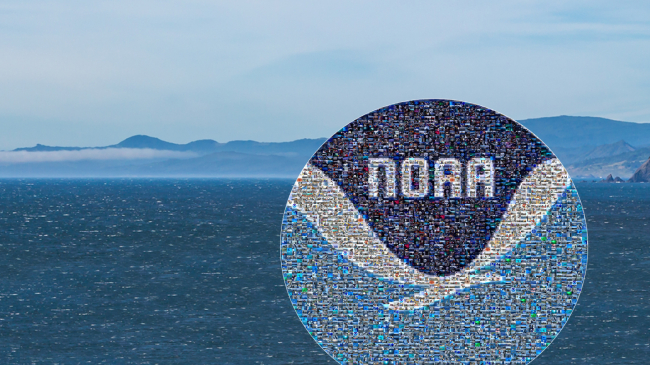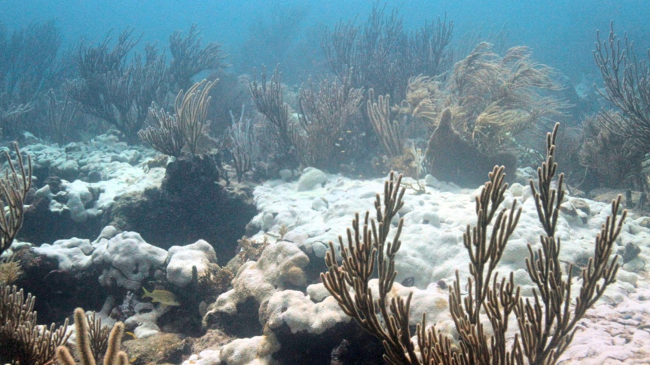Natural cycles, sea surface temperatures found to be main drivers in ongoing event
According to a new NOAA-sponsored study, natural oceanic and atmospheric patterns are the primary drivers behind California's ongoing drought. A high pressure ridge off the West Coast (typical of historic droughts) prevailed for three winters, blocking important wet season storms, with ocean surface temperature patterns making such a ridge much more likely. Typically, the winter season in California provides the state with a majority of its annual snow and rainfall that replenish water supplies for communities and ecosystems.
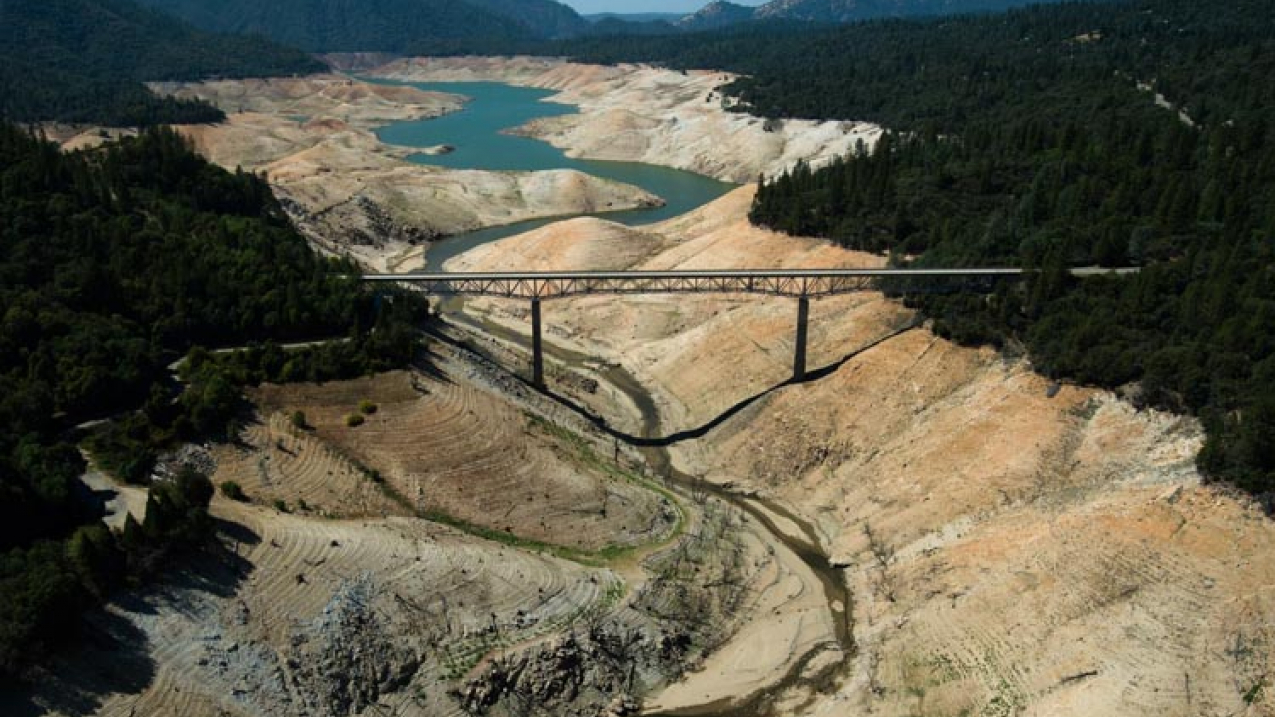
The Enterprise Bridge passes over a section of Lake Oroville that was nearly dry on September 30, 2014, in Oroville, California. Lake Oroville, California's 2nd largest reservoir, was at 49% of average (30% of capacity), the second lowest level on record (behind 1977.) Heavy rains in December 2014 allowed lake levels to recover slightly--as of January 23, 2015 Lake Oroville was at its 7th lowest level of the past 35 years. (Image credit: California Department of Water Resources)
Further studies on these oceanic conditions and their effect on California's climate may lead to advances in drought early warning that can help water managers and major industries better prepare for lengthy dry spells in the future.
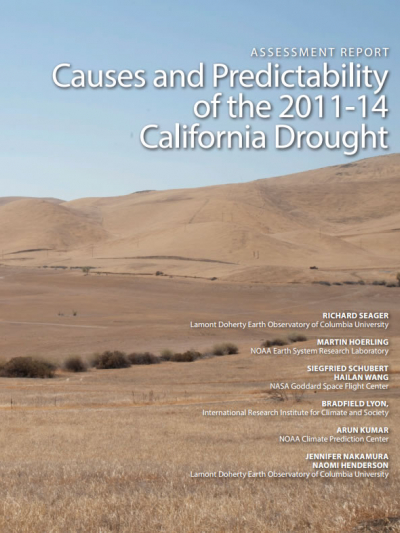
"It's important to note that California's drought, while extreme, is not an uncommon occurrence for the state. In fact, multi-year droughts appear regularly in the state's climate record, and it's a safe bet that a similar event will happen again. Thus, preparedness is key," said Richard Seager, report lead author and professor with Columbia University's Lamont Doherty Earth Observatory.
This report builds on earlier studies, published in September in the Bulletin of the American Meteorological Society, which found no conclusive evidence linking human-caused climate change and the California drought. The current study notes that the atmospheric ridge over the North Pacific, which has resulted in decreased rain and snowfall since 2011, is almost opposite to what models project to result from human-induced climate change. The report illustrates that mid-winter precipitation is actually projected to increase due to human-induced climate change over most of the state, though warming temperatures may sap much of those benefits for water resources overall, while only spring precipitation is projected to decrease.
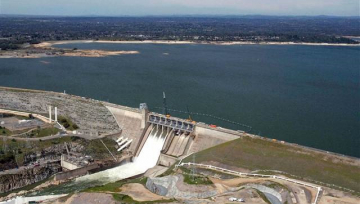
The report makes clear that to provide improved drought forecasts for California, scientists will need to fully understand the links between sea surface temperature variations and winter precipitation over the state, discover how these ocean variations are generated, and better characterize their predictability.
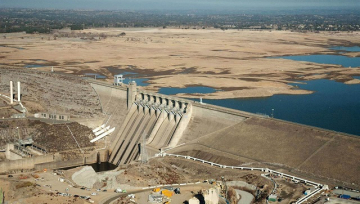
This report contributes to a growing field of science-climate attribution-where teams of scientists aim to identify the sources of observed climate and weather patterns.
"There is immense value in examining the causes of this drought from multiple scientific viewpoints," said Marty Hoerling, report co-author and researcher with NOAA's Earth System Research Laboratory. "It's paramount that we use our collective ability to provide communities and businesses with the environmental intelligence they need to make decisions concerning water resources, which are becoming increasingly strained."
To view the report, visit: http://cpo.noaa.gov/sites/cpo/MAPP/Task%20Forces/DTF/californiadrought/california_drought_report.pdf
NOAA’s mission is to understand and predict changes in the Earth's environment, from the depths of the ocean to the surface of the sun, and to conserve and manage our coastal and marine resources. Join us on Facebook, Twitter, Instagram and our other social media channels.
Media Contact:
John Ewald
240-429-6127


